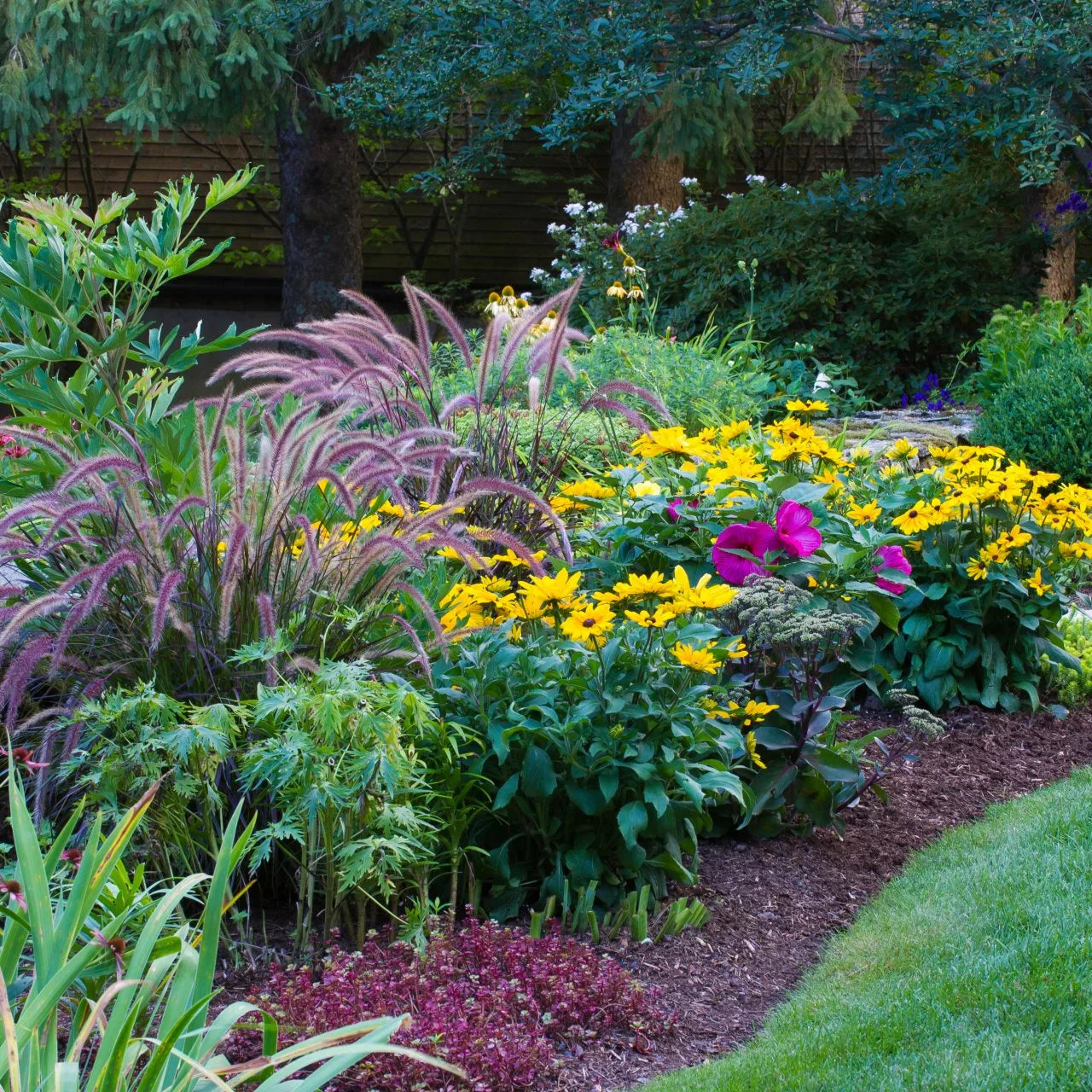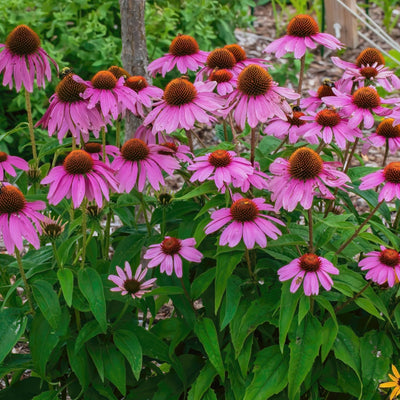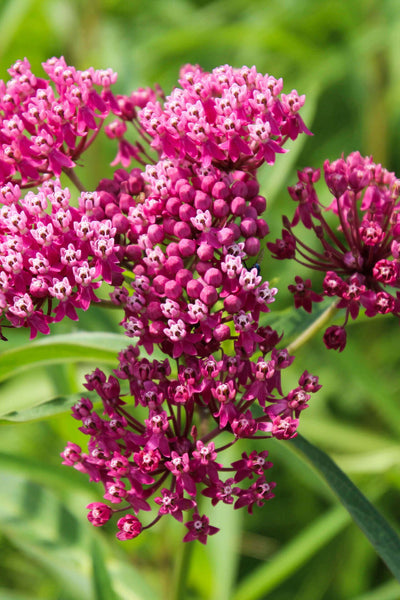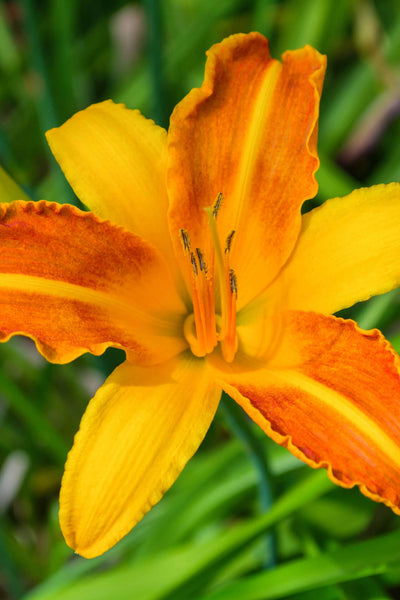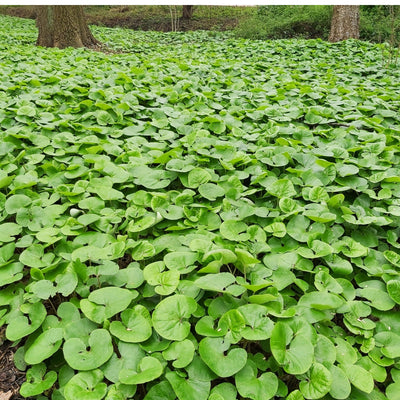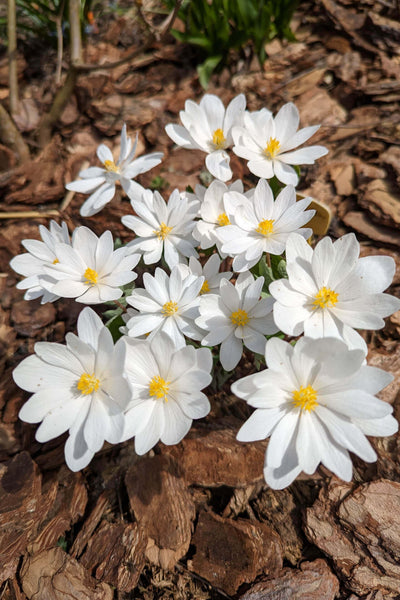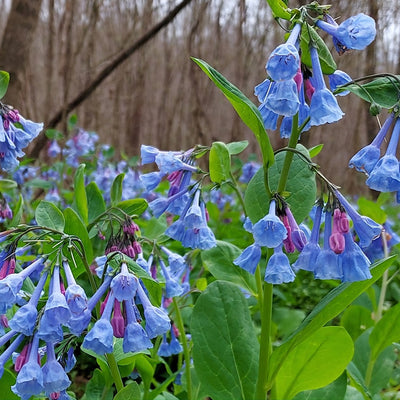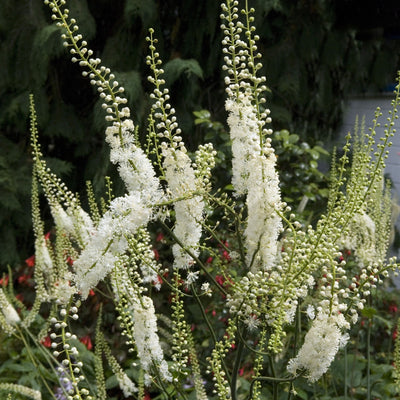One of the most important and popular design principles in gardening, the “Rule of 3” applies to any landscape. Both new gardeners and seasoned professionals use this principle to create more balanced, natural-looking, and visually appealing plant arrangements with minimal effort. By following the rule of threes, you can make a cohesive, intentional, and attractive landscape by simply grouping plants, colors, or shapes in sets of three.
The Rule of 3 works for planting flower beds, designing pollinator plant patches, or mapping out a new shrub or tree plan, making your garden look and move. In this article, we’ll dive into the specifics of what the Rule of 3 means, why it works so well, and how you can use it for plant choice, plant layout, and color design.

Why the Rule of 3 Works in Landscape Design
The Rule of 3 is effective in landscape design because it leverages people’s natural interest in patterns. In nature, the simplest and most repeated patterns are most pleasing to the eye – but only if they repeat in a way that feels organic, as opposed to overly symmetrical or formal. The Rule of 3 is one of these types of patterns: groupings of three things look well-balanced without appearing rigid or forced.
A single plant in a bed looks lonely; two plants may look off-balance or visually awkward. Three plants, on the other hand, form a triangle. A triangle, especially a slightly imperfect one, draws the eye and introduces rhythm into a planting bed. It also covers more ground and makes your plants look more established in the landscape.
The designer’s secret: it’s also an easy way to make perennials, native species, and ornamental shrubs look more mature. They’ll need time to adjust naturally, but the eye tends to respond more positively to odd-numbered groupings, so it’s a design approach many designers use.
Using the Rule of 3 When Planting Perennials
The Rule of 3 works particularly well for planting perennials. Instead of planting a lone coneflower, a single milkweed, or a patch of black-eyed-susans, planting three next to one another creates a much fuller and more balanced appearance in the first year, instead of having to wait for the plants to spread.
Clusters of perennials in groups of three will also likely perform better over the long term. Many plants in the landscape, especially natives, naturally occur in clumps, so planting three of a kind replicates natural patterns. Species like coneflowers, daylilies, hostas, ferns, wild ginger, yarrow, and black cohosh especially look good in groups of three.
Even spring ephemerals like trilliums, bloodroot, Dutchman’s breeches, and bluebells benefit from being planted in groups of three. A single plant may become lost in a landscape, especially under trees or in other shaded gardens, but three will be more noticeable.

Applying the Rule of 3 to Flower Colors
Color harmony is another area in which the Rule of 3 is a practical and surprisingly effective principle. Many gardeners struggle to mix colors in the garden without getting chaotic visuals, but limiting yourself to just three main shades solves that problem.
For example, choosing purple, white, and yellow as the theme colors for a pollinator garden still allows for lavender, coneflowers, yarrow, phlox, and daisies; however, the overall garden will look more cohesive because there are only a limited number of color variations.
The same effect can be achieved with a shade garden that features greens, whites, and soft pinks. Ferns, astilbes, bleeding hearts, and hostas can all be incorporated into a themed bed and still complement the design.
When you use three primary colors in your garden beds, it pulls the entire design together and makes it look more intentional, even like a professionally designed space. More shades are, of course, allowed, but three primary colors now limit you, so you’ll have immediate color harmony.
The Rule of 3 for Height and Layering
Good garden design also utilizes height intentionally; the Rule of 3 can be applied in a structural approach to planting. In fact, plantings can be organized into three levels of height: tall, medium, and low-growing.
Tall, or background, plants provide structure and depth; these can be trees, large shrubs, tall ornamental grasses, or even tall perennials such as Joe Pye weed or Maximilian sunflowers. The middle layer can add fullness to the bed with medium-height options, such as black-eyed Susans, coneflowers, daylilies, hydrangeas, or summer phlox.
The final layer, characterized by low-growing plants, adds texture and coverage to the ground, featuring species such as ajuga, mosses, wild ginger, violets, or groundcover sedges. Three height layers give gardens depth and dimension that can otherwise make the space look flat or chopped up. When each layer is also a grouping of three plants or plant types, the overall landscape will also look fuller, more natural, and professionally designed.

Using the Rule of 3
Gardeners can also use the Rule of 3 by limiting the main plant categories used in each garden bed to three: a structural plant, a filler plant, and an accent plant. Structural plants, which may include shrubs such as hydrangea, holly, viburnum, or evergreens like arborvitae and spruce, are used to anchor the space.
Filler plants provide bulk and interest throughout the season, including coneflowers, ferns, bee balm, daylilies, and perennial grasses. Accent plants add attention-grabbing pops of color or texture and can include bluebells, hostas, bleeding hearts, or black cohosh.
Sticking to three plant categories will keep the design from becoming too complicated without being too rigid. This method also helps create year-round visual interest, more texture, and a smoother transition of color.
Why Odd Numbers Look Better in Garden Beds
The Rule of 3 is a subcategory of a more extensive design principle: odd numbers always look more natural than even numbers. Planting in groupings of 3, 5, 7, or more will help your garden appear less formal and more natural. In nature, plants are not usually evenly distributed in pairs or lines; therefore, using odd numbers of plants creates a more relaxed and inviting landscape.
Odd-numbered groupings work well for large mass plantings in a sweeping curve of the same perennial; using five or seven of the same species can look particularly impressive. For most beds that are smaller or medium in size, three is ideal to give the area some balance without crowding it.

How to Place Plants When Using the Rule of 3
When planting three of a kind, place them in a loose triangle, not a straight line. This irregular triangle softens the design and adds a sense of movement, allowing individual plants to stand out while contributing to a unified group. This spacing also provides more complete coverage of the planting area.
